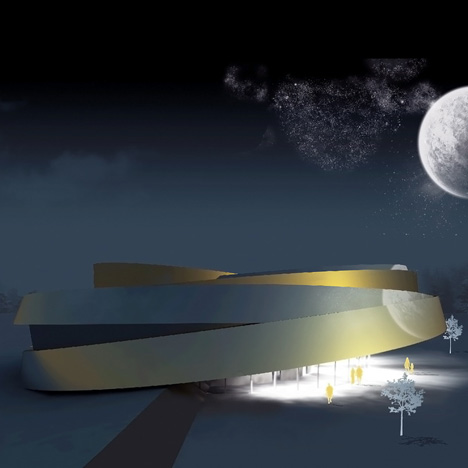
Cultural Center of European Space Technologies by OFIS, Bevk Perovic, Dekleva Gregoric and Sadar Vuga
This culture and technology centre based on the shape of a space station is under construction in Vitanje, Slovenia, and was designed by Slovenian firms OFIS Arhitekti, Bevk Perovic Arhitekti, Dekleva Gregoric Arhitekti and Sadar Vuga Arhitekti.
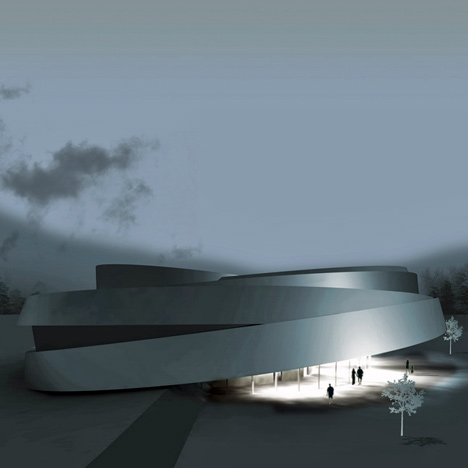
The building design takes inspiration from a habitable wheel-shaped space station envisaged by rocket engineer Herman Potočnik Noordung in 1929.
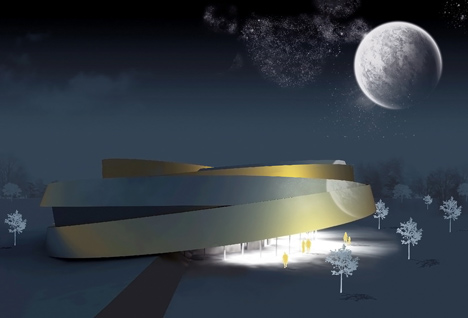
The building will feature a series of interlocking rings that lie on top of each other to create a continuous ramped structure.
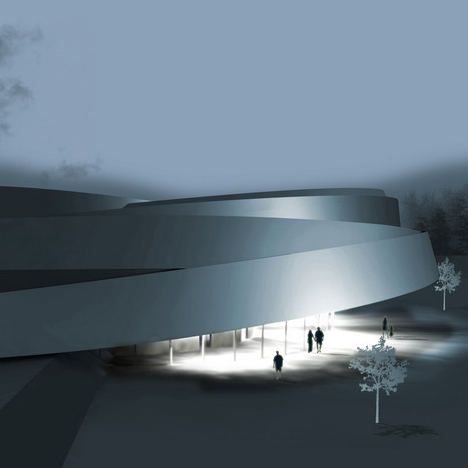
The upper part of the building will house a research area, while the lower parts will house exhibition spaces, a multi-purpose hall and an auditorium.
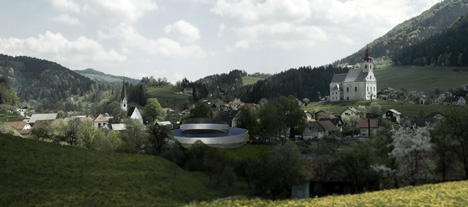
Construction is due to be completed this year.
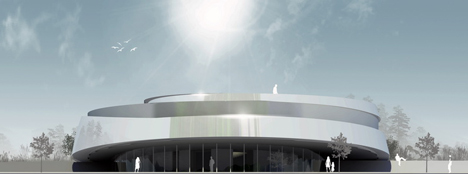
Read all our stories on OFIS Arhitekti »
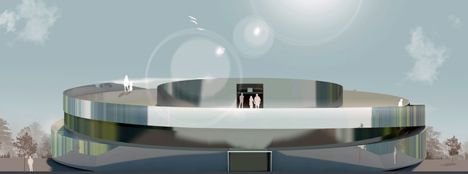
The following information is from OFIS Arhitekti:
SPACE WHEEL_NOORDUNG SPACE HABITATION CENTER
The Cultural Center of European Space Technologies (KSEVT)
2008-2011
With its program, The Cultural Center of European Space Technologies (KSEVT) will supplement the local cultural and social activities of the Arts Center in Vitanje.
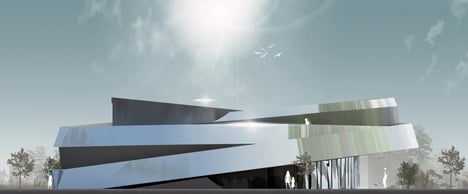
With its size and typology the existing object already indicates a publicly significant role, but its capacity and technological design no longer suffice for newer collective requirements.

The architectural design for the building of The Cultural Center of European Space Technologies in Vitanje originates from the schematics for the first geostationary space station, or to be more precise its habitation wheel, described in his 1929 book by Herman Potocnik Noordung.

Click for larger image
KSEVT will have emphasized public significance and will generate social, cultural and scientific activities. In the KSEVT building that replaces the existing object of the multifunctional arts center there will be an abundance of social activities, with fixed and temporary exhibitions, conferences and club/study activities.
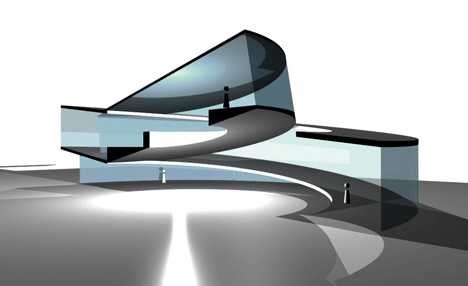
Click for larger image
The building will therefore be intended for the local population, as well as guests of exhibitions and participants of international symposia and conferences. In the club area at the top of the building researchers of the history of space technology will be able to focus on their work, removed from the activities in the lower part of the building.
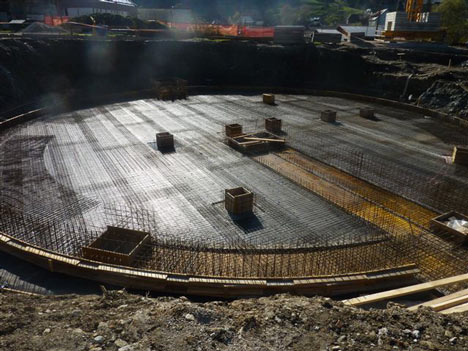
The building is a monolithic structure, freely positioned on the allotment between the main road on one side and the stream with a green hinterland on the other. The exterior and interior of the building are determined by two low cylinders.
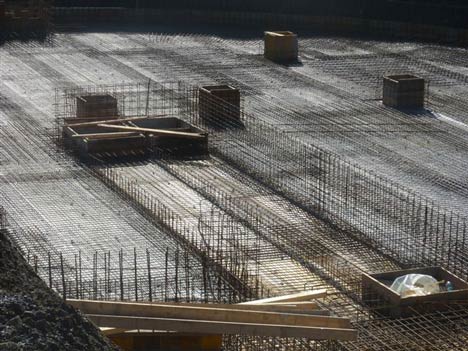
The bottom one is larger and rises from the North to the South, while the upper one is smaller and it joins with the larger one on the southern side and rises towards the North. The bottom cylinder is supported by the transparent surface of the entrance glazing. The spatial relationship between the two cylinders creates a dynamic effect, which is even more accentuated by full glass rings around the building.
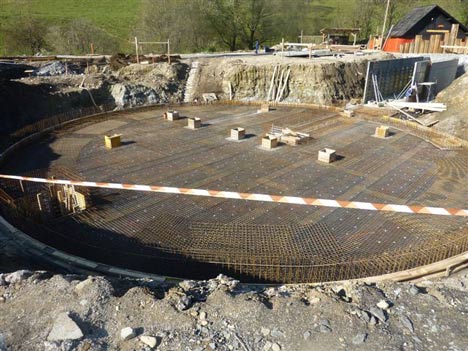
The effect of floatation and rotation of the building on its southern and western side towards the road and the entrenchment into the surface on the other side towards the stream and hill creates an impression of memorable importance of the building in this area, as well as its connection to its immediate surroundings.
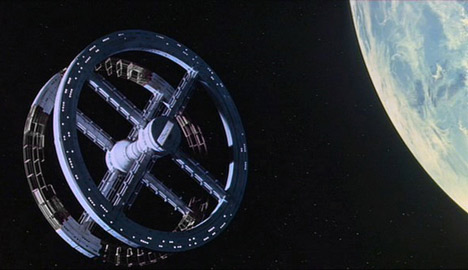
Above: Potočnik's Space Station (illustration (c) by Simon Zajc)
The spatial effects give the building its most distinguishing feature – the effect of artificial gravity due to floatation and rotation. The building has two entrances – the main one to the central space from the square in front of the building on the southeastern side and the northern entrance from the gravelly surface above the stream.
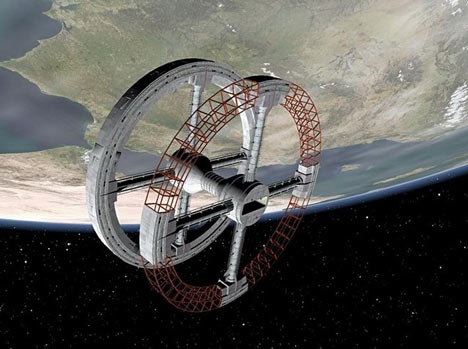
Above: image courtesy of the architects
The main entrance covers the overhanging part of the larger cylinder. Through this “tight” space, past the circular vestibule with a reception, we enter the interior of the hall.
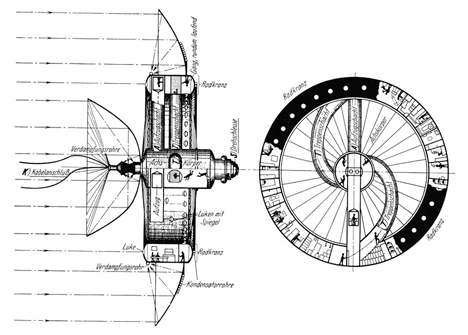
Above: Potočnik's illustration of inhabitable wheel - side and front view
The vestibule can be separated from the activities in the hall by a curtain. The entrance glazing can be completely opened and can connect the activities in the hall with the square. The circular hall for 300 people is surrounded on both sides by a semicircular ramp.
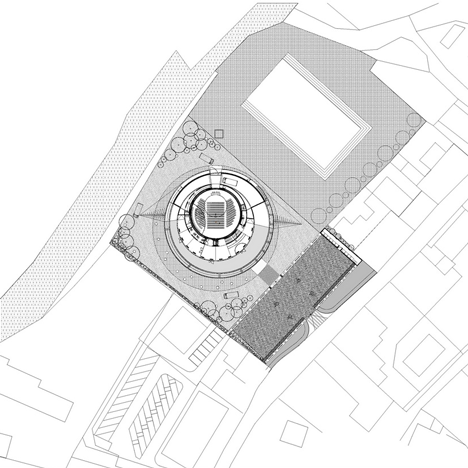
Click for larger image
This marks the beginning of the exhibition area, which continues from here to the interior of the overhanging part of the larger cylinder. On the west side, along the ramp, there are smaller office areas. Ascending on this ramp also represents a transition from the bright space of the hall to the dark exhibition area.
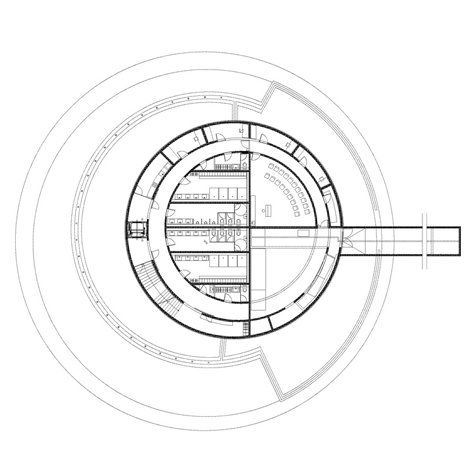
Click for larger image
The separated vertical connection with a staircase and a large elevator connects the exhibition area directly to the vestibule of the hall.
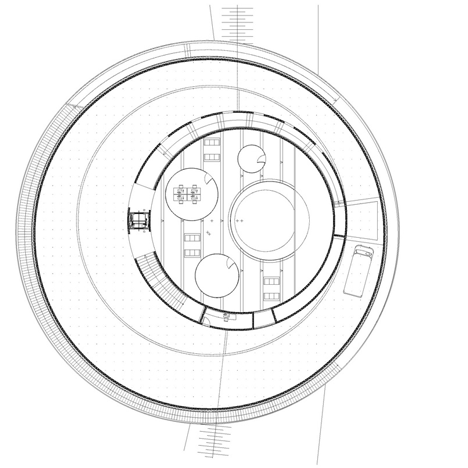
Click for larger image
The exhibition space continues through the landing between the elevator and the staircase to the smaller cylinder, the multi-purpose hall, an auditorium which is raised like a terrace above the hall. From here there is a vertical view of what is happening below.
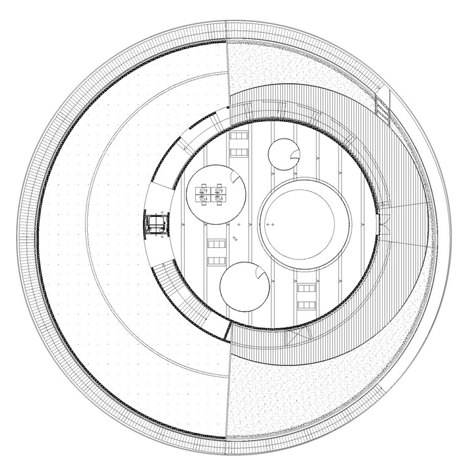
Click for larger image
The smaller cylinder is concluded at the highest, northernmost part with the club area – the library, the most intimate part of the entire building.
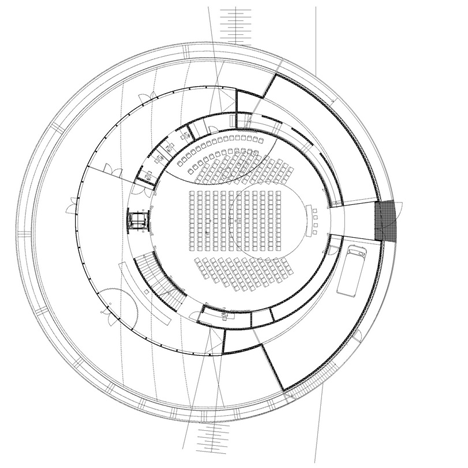
Click for larger image
MATERIALS AND WORK
The design of the objects creates a feeling of volume, which has a unique, memorable and characteristic expression. For this purpose, the materials are simple and clean.
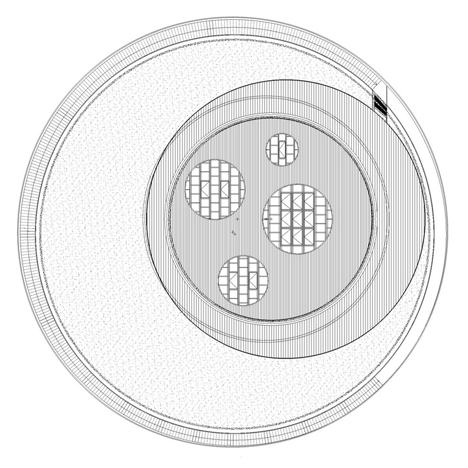
Click for larger image
The basic construction of the object consists of reinforced concrete. In unison with the rest of the building, the exhibition area is without daylight, with an opaque surface.
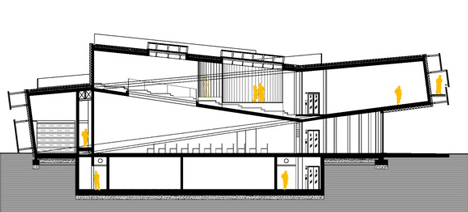
Click for larger image
There are windows in the library and the lower part of the hall. The hall is fitted with zenithal lighting. The front in the opaque part is made of various types of aluminum. The interior of the object is made with a combination of self-compacting concrete, paint and wainscot. All of this will be defined in greater detail in the next phases of the project documentation.
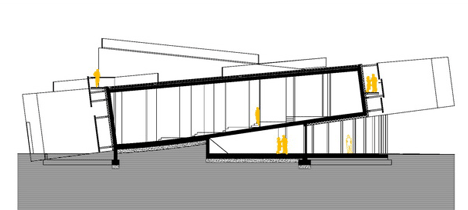
Click for larger image
PROTAGONISTS :
Architecture: ( in alphabetical order ) :
Bevk Perovic arhitekti,
Dekleva Gregoric arhitekti,
OFIS arhitekti
, Sadar Vuga arhitekti
Noordung Space Technologies Center concept & producer: Dragan Zivadinov, Miha Tursic
Graphic design:
Atelje Balant
Client / project coordinator:
Vitanje Community ( for /Srecko Fijavz )
See also:
.
 |
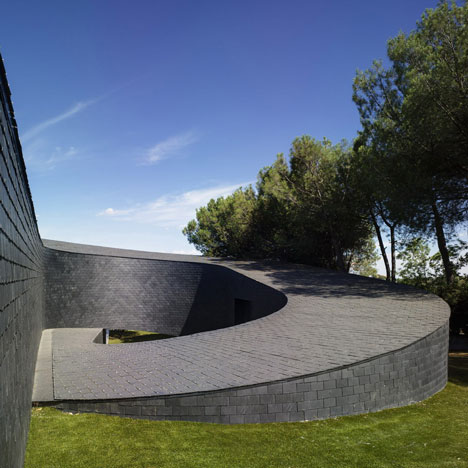 |
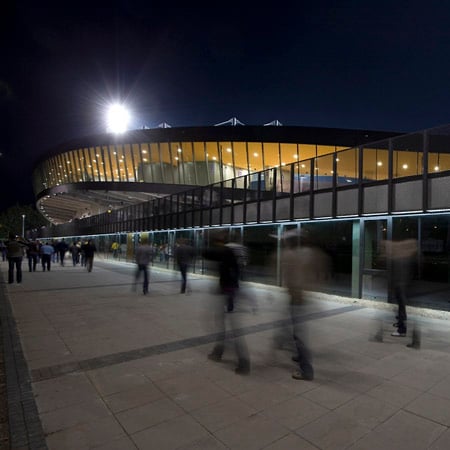 |
| Danish Pavilion at Shanghai Expo 2010 by BIG | 360 House by Subarquitectura |
The Ring by OFIS Arhitekti |